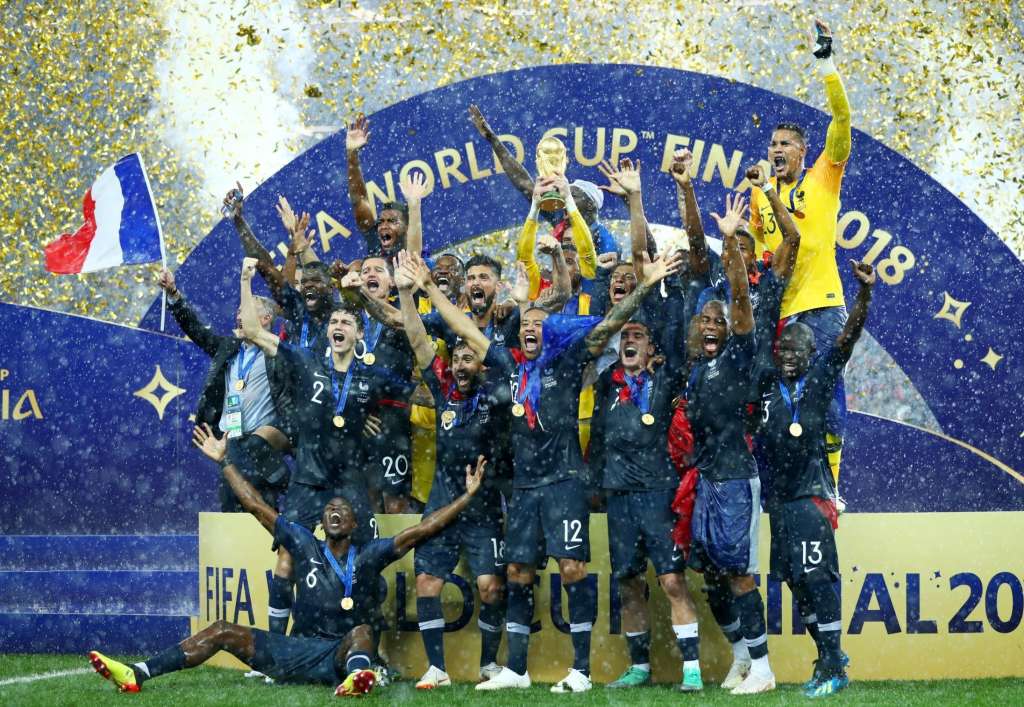(CNN) — More than 5,000 miles away from the World Cup final in Moscow’s Luzhniki Stadium, thousands of fans filed into the Mercedez-Benz Stadium — home of Atlanta United FC.
But this was still hours before Atlanta faced the Seattle Sounders, yet more than 20,000 fans were brandishing French flags and checkered Croatia kits.
Stadium lights flashed and goal horns blared every time a player back in Moscow found the back of the net and as the final whistle blew, Les Bleus fans celebrated with euphoria.
It was a taste of what is to come in eight years, with Atlanta likely to become one of the cities to play host to the 2026 World Cup — an event and a moment that United States soccer and Major League Soccer can’t wait for.
“Most countries can only dream of something like this,” Carlos Cordeiro, the president of US Soccer, told CNN.
The 2026 World Cup will be the first time 48 teams will play a combined 80 matches in three different countries — with 60 of those in the US and 20 split evenly between Canada and Mexico.
“It is transformational,” Cordeiro said. “It is everything we think it will be and we’re only a few weeks into planning it.”
Budding in popularity
In September 2014, when Darren Eales was appointed president of Atlanta United, few could have predicted the kind of support the MLS’ 22nd franchise would immediately have.
Much to Eales’ pleasant surprise, after less than two full seasons of play, Atlanta is on pace to be the league’s leader in attendance for the second consecutive season.
“We’ve created an energy and a passion that rivals anywhere in the world,” Eales told CNN.
Atlanta’s passion reflects soccer’s budding popularity in the US. A Gallup poll from December 2017 notes that soccer is more popular among those aged 18-34 than baseball and equal in popularity to basketball.
According to the United 2026 Bid Book, there are almost four million youth soccer players in the US. And, as a result of youth interest, Cordeiro believes that within the next two decades, soccer will be the “preeminent sport” in the US.
“I think it’s going to be really amazing to have that tournament in our country, in North America,” star US striker Christian Pulisic told CNN. “Just to grow the sport, grow the culture in this area of the world.”
Not as bad as expected?
During the final qualifying round for the Confederation of North, Central American and Caribbean Association Football (CONCACAF) in mid-October 2017, many soccer pundits expressed dismay at the performance of the US men’s national soccer team (USMNT) after it fell 2-1 to Trinidad and Tobago and missed the 2018 World Cup in Russia.
That loss and resulting failure to qualify for this year’s tournament led to wholesale changes within the US men’s soccer program.
USMNT head coach Bruce Arena resigned just days after the defeat, while Sunil Gulati announced he wouldn’t seek re-election as US Soccer’s president in December.
Cordeiro replaced Gulati a few months later and immediately looked to revamp the federation’s technical structure. From August 1, Philadelphia Union sporting director Earnie Stewart will officially help with that rebuilding process as he becomes the USMNT’s first-ever general manger.
Many fans feared that the USMNT’s failure to qualify for the 2018 World Cup would minimize the sport’s foothold in the US. Yet while heading into this year’s World Cup final, Fox’s television viewership was down more than 30 percent from 2014, the tournament has still maintained relevance in a way that it might not have been able to 12 years ago.
“It’s a really good example of where soccer is, that not qualifying hasn’t been the end of the world,” Eales said. “It was a disappointment that the American men’s national team didn’t make the World Cup, but there’s still an interest in the game of soccer and the World Cup.”
Can the US win the tournament?
Both Eales and Cordeiro agree that the US can’t take qualifying for the 2022 World Cup in Qatar for granted.
But Eales said that realistically the eight years of lead-in time makes the 2026 World Cup the more likely tournament in which the US might make a deep run.
By then, today’s 12 and 13 year-olds entering MLS academies will be in their twenties and the continuity that both Eales and Cordeiro expect within academies and US Soccer will lead to a more defined identity and style of play.
Cordeiro says that additional financial resources will also help a grassroots effort to encourage more widespread participation and tap into a more diverse American talent pool.
The bid committee also believes that there will be record ticket sales and profits in what it says will be the “largest single sporting event the world has ever seen.”
Come 2026, if American men’s soccer does in fact tap into underserved communities and foster a new generation of talent, then maybe the US will achieve its best results in history.
Certainly Pulisic hopes that US fans will be watching their home team try and cap off the transformational tournament with a title.
“That’s the dream of course, playing in a World Cup final,” Pulisic said. “So I’m going to do everything I can to give myself a chance to be there and I know that our country and all the players will do the same.”
The-CNN-Wire™ & © 2024 Cable News Network, Inc., a Time Warner Company. All rights reserved.

